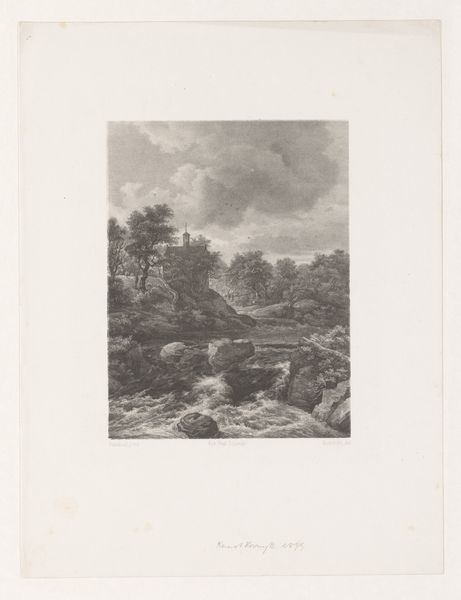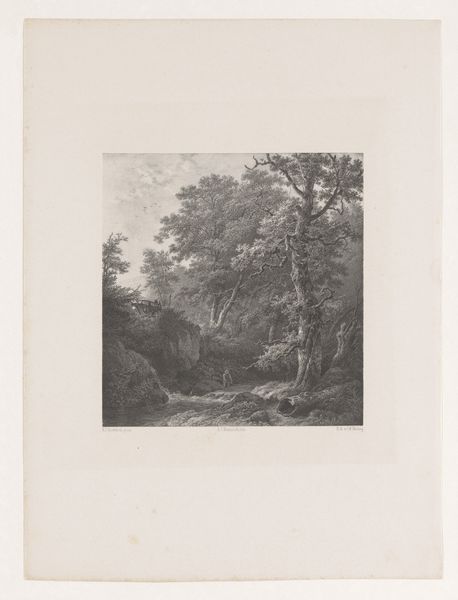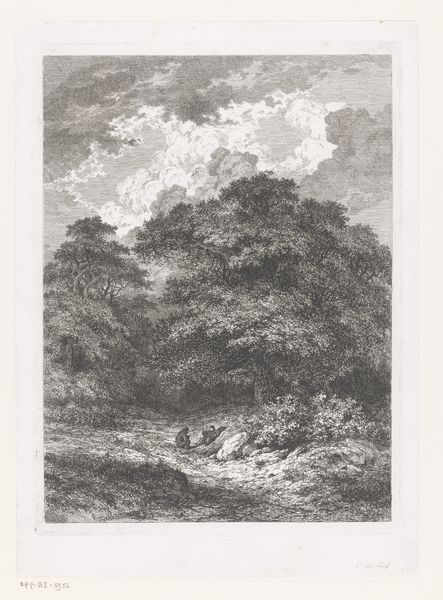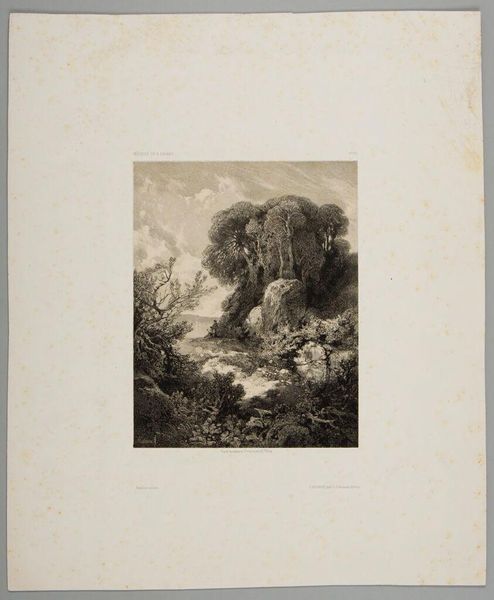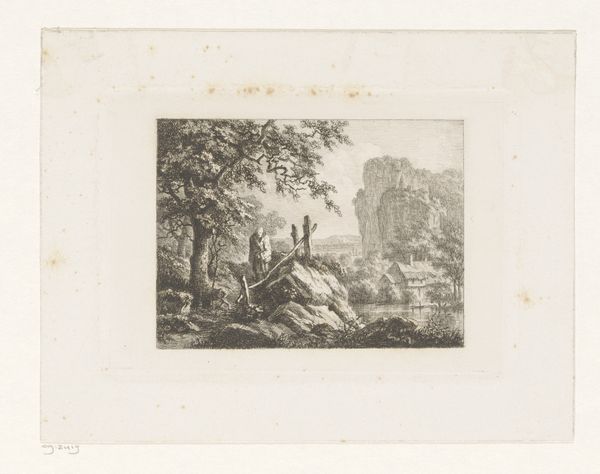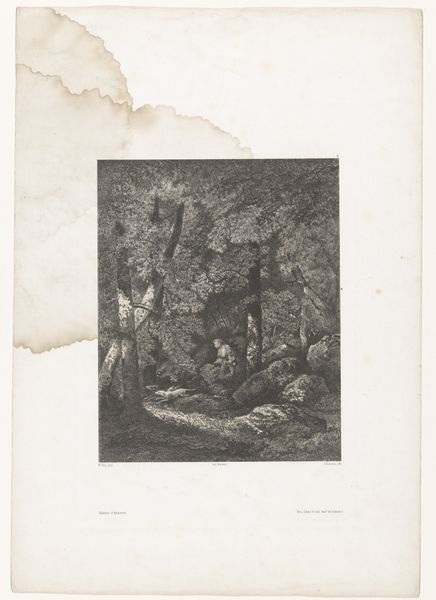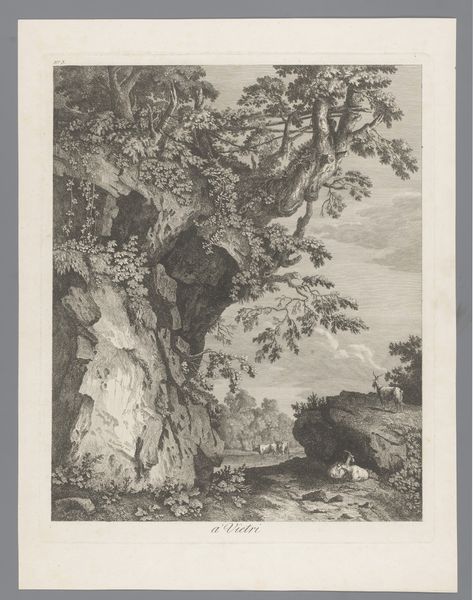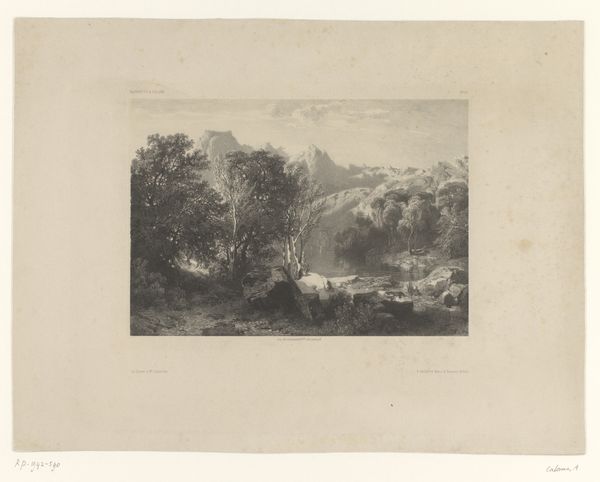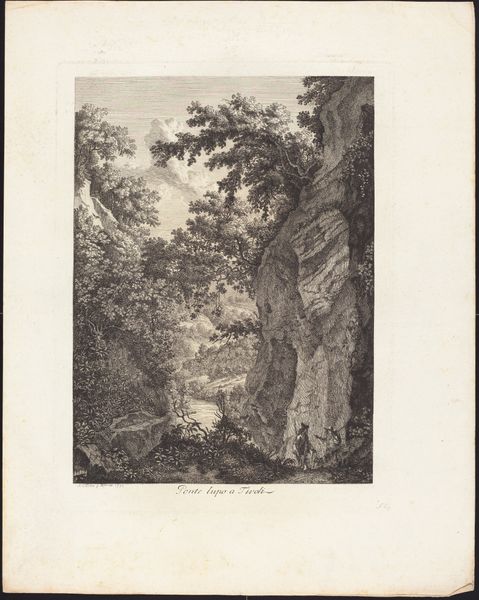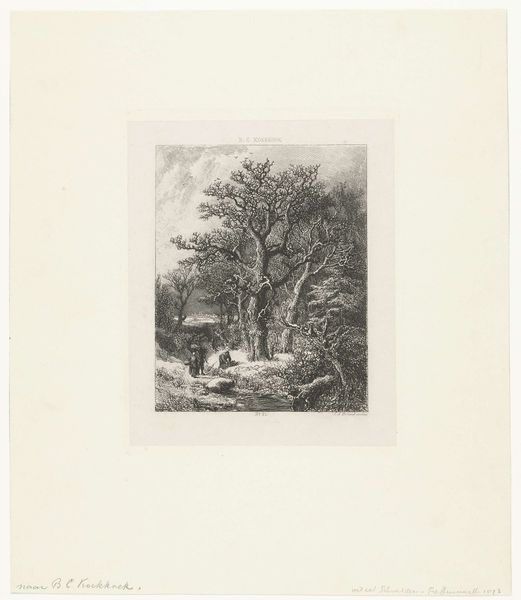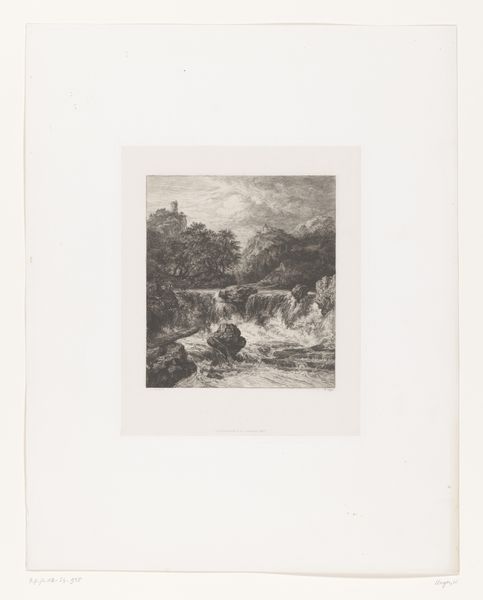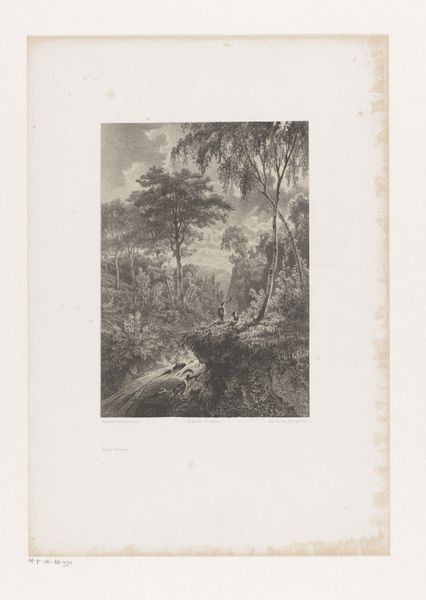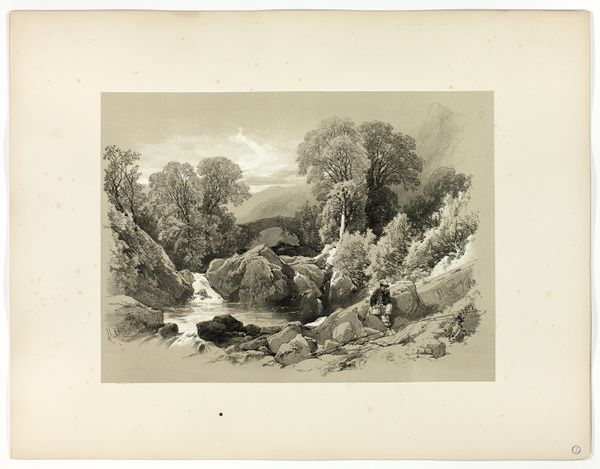
Dimensions: height 237 mm, width 188 mm
Copyright: Rijks Museum: Open Domain
Curator: Allow me to introduce "Berglandschap met bomen en rotsen," a landscape study rendered in graphite on paper, created between 1852 and 1855 by Alexandre Calame. Editor: My initial impression is one of contained chaos. There is a sense of dense, almost impenetrable foliage set against the backdrop of distant mountains. The varying shades of grey lend the composition depth. Curator: Precisely. Calame, rooted in the Romantic tradition, aimed to capture the sublime through his landscapes. He understood the role of nature in fostering deep emotion and national sentiment during a period of social upheaval. Editor: I observe how the dense arrangement of forms pushes the viewer into the pictorial space. It’s a play of dark and light—an exercise in controlling tonal gradations. Curator: Indeed. Calame sought recognition from art institutions; his style resonated with a broader European yearning for untamed wilderness. The work functions as an idyll for a rapidly changing Europe. Editor: How intriguing! The scale and texture of each leaf is lost within the aggregated canopy of the forest. We aren’t meant to ponder botanical individuality, but to sense a vast vegetative architecture, even without a singular horizon line. Curator: We understand it in light of landscape's surge in popularity among a rising middle class; and Calame was trying to create something monumental out of an easily-accessible, widely appreciated motif. This speaks to the social function of art—it embodies, reinforces, and guides aesthetic norms for the time. Editor: Still, the lack of precise articulation forces the eye to constantly refocus, reaffirming the sublimity you speak of. An endless visual push and pull from dark foreground to misty heights, creating an experience that is very Romantic indeed. Curator: Looking closely at how Calame presents the trees and rocks, it makes me reflect upon art’s role in crafting our notions of 'wilderness'. It begs us to question what social forces were at play at the time. Editor: For me, examining how visual structure works alongside emotional impact gives rise to many new layers for thought. Thanks for walking through these thoughts together!
Comments
No comments
Be the first to comment and join the conversation on the ultimate creative platform.
